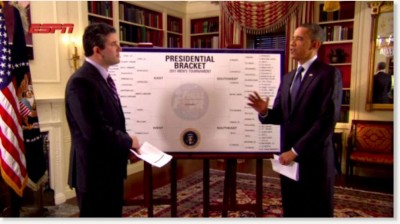Why is the Affordable Care Act (ACA) more widely known as “Obamacare”? After all, we don’t call Medicare “Johnsoncare” or Social Security “Roosecurity.”
President Obama, who is currently on a traveling charm offensive to promote the ACA, offered a hypothesis yesterday: “Once it’s working really well, I guarantee you they will not call it ‘Obamacare.'” If we extrapolate a bit from his remark, the ACA is more widely known as “Obamacare” because his opponents want to associate the law with the President who is widely loathed on the Right and earns mixed reviews from the general public (though polls consistently show that the vast majority of Americans find Obama personally likable). Bad President, bad law, so the thinking goes. Or perhaps the term conjures the image of Obama crossing the country with a stethoscope and kicking down doors, forcing blood pressure readings on us. That is to say, “Obamacare” may generate fears of the worst kind of “nanny state.”

But here’s an alternative explanation for the persistence of the term. Consider that his own supporters use the term, no doubt creating love for the law on the Left. Unlike Social Security and Medicare (single-payer systems of direct entitlements), the ACA is actually a complex mixture of taxes and subsidies, public-private exchanges, and regulations on the private insurance industry. In other words, it’s no one thing.
As the time goes on, I suspect “Obamacare” will fall by the wayside and “ACA” is a bit too wonky to stick. But what the popular name will ultimately be depends on what the public (or the political claimsmakers who inform them) see as the marquee feature of the legislative package. I would guess the healthcare exchanges will come to be more important than most believe. So, I’ll lay my odds on “Health Exchange” as the thing currently known as “Obamacare.”






